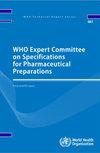美国普吉特湾和华盛顿沿海地区粉鲑和红鲑自然种群的竞争相互作用
Q3 Medicine
引用次数: 0
摘要
在美国华盛顿,粉红鲑鱼(Oncorhynchus gorbuscha)和鲑鱼(O. keta)的自然种群构成了太平洋鲑鱼的最高回报,许多种群在同一流域产卵,导致在所有生命阶段持续存在的密度依赖相互作用(图1)。从1967年至2017年,本研究中使用的粉红鲑鱼的年平均回报为2,210,481(范围:413,269至7,813,504),从1968年至2017年,鲑鱼的年平均回报为1,010,333(范围:174,334至2,662,673;图2)在该地区,粉红鲑鱼主要在奇数年返回,与鲑鱼的存活率降低有关,但也与其他物种有关,包括奇努克鲑鱼(O. tshawytscha, Ruggerone和Goetz 2004)和南部居民虎鲸(Orcinus orca, Ruggerone et al. 2019)。对于鲑鱼,与粉红鲑鱼相互作用的种群在丰度上表现出强烈的两年模式(Gallagher 1979),在大小(Pratt 1974)、成熟年龄(Smoker 1984)和生产力(Ruggerone和Neilsen 2004)上有规律的偶数年和奇数年变化。然而,几十年来一直没有对这些生物学特性进行全面的回顾。在华盛顿,粉红鲑鱼和大马哈鱼之间的竞争可以发生在任何生活史阶段,除了没有粉红鲑鱼生产系统的沿海种群。有趣的是,沿海大马哈鱼种群在成鱼丰度和大小上也表现出强烈的年际变化,这表明重叠海洋时期的竞争可能是建立独特的偶数和奇数年模式的最关键因素。本文章由计算机程序翻译,如有差异,请以英文原文为准。
Competitive Interactions between Natural Populations of Pink and Chum Salmon from Puget Sound and Coastal Washington, USA
Natural populations of pink (Oncorhynchus gorbuscha) and chum salmon (O. keta) make up the highest returns of Pacific salmon to Washington, USA and many stocks spawn in the same watersheds, leading to density dependent interactions that persist across all life stages (Fig. 1). From 1967–2017, annual returns of pink salmon used in this study averaged 2,210,481 (range: 413,269 to 7,813,504) and from 1968–2017, returns of chum salmon averaged 1,010,333 (range: 174,334 to 2,662,673; Fig. 2). In this region, pink salmon predominantly return in odd years and are associated with reduced survival of chum salmon, but also other species, including Chinook salmon (O. tshawytscha, Ruggerone and Goetz 2004) and southern resident killer whales (Orcinus orca, Ruggerone et al. 2019). For chum salmon, stocks interacting with pink salmon exhibit strong biennial patterns in abundance (Gallagher 1979) with regular evenand odd-year variations in size (Pratt 1974), age-at-maturity (Smoker 1984), and productivity (Ruggerone and Neilsen 2004). However, there has not been a comprehensive review of these biological attributes in decades. Competition between pink and chum salmon in Washington can occur during any life history stage, except in coastal populations where there are no pink salmon producing systems. Interestingly, coastal chum salmon populations also exhibit strong inter-annual variations in adult abundance and size, suggesting that competition during the overlapping marine period may be most critical for establishing the distinct evenand odd-year patterns.
求助全文
通过发布文献求助,成功后即可免费获取论文全文。
去求助
来源期刊
CiteScore
0.44
自引率
0.00%
发文量
0
期刊介绍:
The WHO Technical Report Series makes available the findings of various international groups of experts that provide WHO with the latest scientific and technical advice on a broad range of medical and public health subjects. Members of such expert groups serve without remuneration in their personal capacities rather than as representatives of governments or other bodies; their views do not necessarily reflect the decisions or the stated policy of WHO.

 求助内容:
求助内容: 应助结果提醒方式:
应助结果提醒方式:


